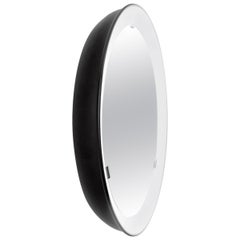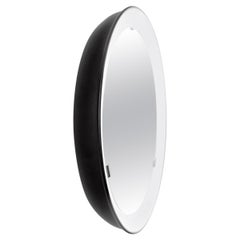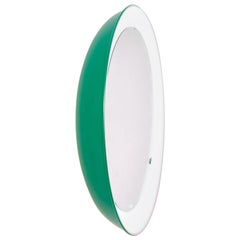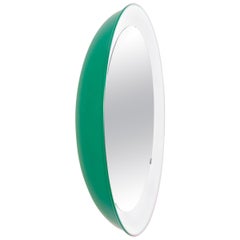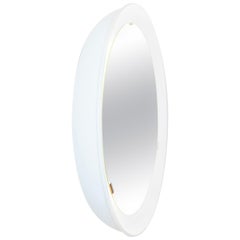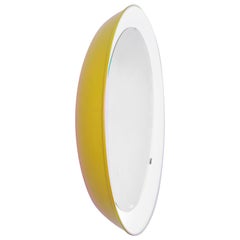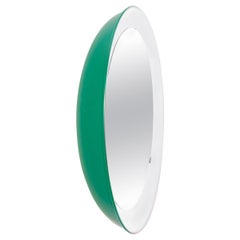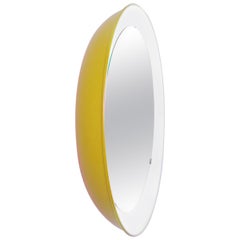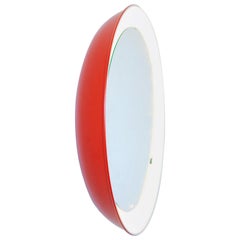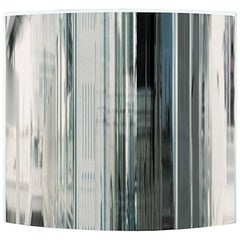Ph Mirror Black Painted Satin Matt
2010s Danish Bauhaus Wall Mirrors
Aluminum
2010s Danish Bauhaus Wall Mirrors
Aluminum
2010s Danish Bauhaus Wall Mirrors
Aluminum
2010s Danish Bauhaus Wall Mirrors
Aluminum
2010s Danish Bauhaus Wall Mirrors
Aluminum
2010s Danish Bauhaus Wall Mirrors
Aluminum
2010s Danish Bauhaus Wall Mirrors
Aluminum
2010s Danish Bauhaus Wall Mirrors
Aluminum
2010s Danish Bauhaus Wall Mirrors
Aluminum
2010s Danish Bauhaus Wall Mirrors
Aluminum
2010s Danish Bauhaus Wall Mirrors
Aluminum
2010s Danish Bauhaus Wall Mirrors
Aluminum
2010s Danish Bauhaus Wall Mirrors
Aluminum
2010s Danish Bauhaus Wall Mirrors
Aluminum
People Also Browsed
2010s Indian Modern Wall Mirrors
Mirror
2010s Italian Minimalist Screens and Room Dividers
Mirror
21st Century and Contemporary Canadian Art Deco Coffee and Cocktail Tables
Marble, Brass
20th Century French Coffee and Cocktail Tables
Metal
Vintage 1930s German Art Deco Table Lamps
Chrome, Metal
Vintage 1970s Mid-Century Modern Coffee and Cocktail Tables
Vintage 1970s Italian Mid-Century Modern Side Tables
Chrome
Vintage 1970s French Mid-Century Modern Coffee and Cocktail Tables
Ceramic, Oak
Mid-20th Century Italian Mid-Century Modern Coffee and Cocktail Tables
Crystal, Steel
2010s American Modern Shelves
Brass
Vintage 1960s Italian Mid-Century Modern Coffee and Cocktail Tables
Bamboo, Rattan, Glass
Mid-20th Century Italian Art Deco Coffee and Cocktail Tables
Walnut
Early 20th Century French Art Deco Coffee and Cocktail Tables
Onyx, Marble
20th Century American Mid-Century Modern Coffee and Cocktail Tables
Ceramic, Pottery
Vintage 1970s American Modern Shelves
Brass
Mid-20th Century Italian Mid-Century Modern Coffee and Cocktail Tables
Steel
Ph Mirror Black Painted Satin Matt For Sale on 1stDibs
How Much is a Ph Mirror Black Painted Satin Matt?
Poul Henningsen for sale on 1stDibs
The name Poul Henningsen is synonymous with the best and most innovative modern Scandinavian lamps and other lighting. The Danish designer created a signature vocabulary of fixtures with tiered and layered shades in sculptural arrangements that are at once naturalistic and geometric.
Henningsen grew up in a town on the outskirts of Copenhagen and studied architecture at the Technical University of Denmark. He would become a noted art critic, journalist and screenwriter, but his first love was lighting design.
Henningsen’s childhood home was illuminated by oil lamps. When his family switched to electrified lighting, he was alarmed and repelled by the harsh glare cast by an incandescent bulb, and in his late teens he began conducting quasi-scientific experiments to measure which materials and methods best diffused or reflected light to give it a warm brightness. His work came to the attention of the lighting-fixtures firm Louis Poulsen, which sponsored the development of a prototype lamp. The design won a gold medal at the 1925 Paris Expositions Internationales des Arts Decóratifs et Industriels Modernes — from which the term Art Deco derives. The lamp, whose three-part shade is said to be inspired by the arrangement of a dinner plate atop a soup bowl atop a teacup, became the basis for Henningsen’s most successful design, the PH 4/3 desk lamp.
All told, Henningsen would design some 100 lighting fixtures in his career. Some of his most notable creations are hanging lamps, which include the Septima (1929), a pendant composed of seven graduated frosted-glass layers; the Spiral (1942), made of a single ribbon of enameled aluminum; and the Artichoke lamp (1958), whose 70 glass or metal fins in a staggered and graduated arrangement on a central steel frame resemble those of its namesake. The last is likely Henningsen’s masterwork and an icon of mid-20th-century design. Like all Henningsen lighting designs, it is striking, sculptural and — thanks to his insistence on the primacy of the quality of the light cast — superbly functional.
Find a collection of authentic Poul Henningsen table lamps, floor lamps and other lighting on 1stDibs.
A Close Look at bauhaus Furniture
The Bauhaus was a progressive German art and design school founded by the architect Walter Gropius that operated from 1919 to 1933. Authentic Bauhaus furniture — sofas, dining chairs, tables and more — and the school’s followers married industrial and natural materials in simple, geometric forms. The goal of the Bauhaus was to erase the distinction between art and craft while embracing the use of new technologies and materials.
ORIGINS OF BAUHAUS FURNITURE DESIGN
- Art and design school established in Germany in 1919
- Promotion of a union of art, craft and technology
- Design intended for mass production
- School’s workshops focused on cabinetry, metalworking, typography, textiles and more
- Informed by De Stijl, Constructivism, Art Nouveau, Arts and Crafts, and modernism; influenced mid-century modernism, Scandinavian modernism
CHARACTERISTICS OF BAUHAUS FURNITURE DESIGN
- Emphasis on craft
- Simplicity, order, clarity and a prioritization of functionalism
- Incorporation of geometric shapes
- Minimalist and refined, little to no ornamentation
- Use of industrial materials such as tubular chrome, steel and plastic as well as leather, cane and molded plywood in furniture and other products
BAUHAUS FURNITURE DESIGNERS YOU SHOULD KNOW
- László Moholy-Nagy
- Ludwig Mies van der Rohe
- Anni Albers
- Josef Hoffmann
- Marcel Breuer
- Marianne Brandt
AUTHENTIC BAUHAUS FURNITURE ON 1STDIBS
The name Bauhaus is derived from the German verb bauen, “to build.” Under the school’s innovative curriculum, students were taught the fine arts, such as painting and sculpture, as well as practical skills like carpentry and metalworking.
The school moved from Weimar in 1925 to the city of Dessau, where it enjoyed its heyday under Gropius, then Hannes Meyer and Ludwig Mies van der Rohe. The period from 1932 to 1933 when it operated in Berlin under Mies was its final chapter. Despite its brief existence, the Bauhaus has had an enduring impact on art and design in the United States and elsewhere, and is regarded by many as the 20th century’s chief crucible of modernism.
The faculty roster at the Bauhaus reads like a who’s who of modernist creative genius — it included such artists as Paul Klee, Wassily Kandinsky and László Moholy-Nagy along with architects and designers like Mies and Marcel Breuer, who became known for his muscular brutalist-style concrete buildings in the postwar years. In 1925, while he was head of the Bauhaus carpentry workshop, Breuer gave form to his signature innovation: the use of lightweight tubular-steel frames for chairs, side tables and sofas — a technique soon adopted by Mies and others. Breuer’s Cesca chair was the first-ever tubular steel frame chair with a caned seat to be mass produced, while the inspiration for his legendary Wassily chair, a timeless design and part of the collection crafted to furnish the Dessau school, was the bike he rode around campus.
Bauhaus design style reflects the tenets by which these creators worked: simplicity, clarity and function. They disdained superfluous ornament in favor of precise construction. Seating pieces such as side chairs, armchairs or club chairs for example, were made with tubular metal or molded plywood frames, and upholstery was made from leather or cane. Above all, designs in the Bauhaus style offer aesthetic flexibility. They can be the elements of a wholly spare, minimalist space, the quiet foundation of an environment in which color and pattern come from one’s own collection of art and artifacts.
Today, from textiles to typefaces, architecture, furniture and decorative objects for the home, Bauhaus creations continue to have an outsize influence on modern design.
Find a collection of authentic Bauhaus furniture on 1stDibs.
Finding the Right more-mirrors for You
The road from early innovations in reflective glass to the alluring antique and vintage mirrors in trendy modern interiors has been a long one but we’re reminded of the journey everywhere we look.
In many respects, wall mirrors, floor mirrors and full-length mirrors are to interior design what jeans are to dressing. Exceedingly versatile. Universally flattering. Unobtrusively elegant. And while all mirrors are not created equal, even in their most elaborate incarnation, they're still the heavy lifters of interior design, visually enlarging and illuminating any space.
We’ve come a great distance from the polished stone that served as mirrors in Central America thousands of years ago or the copper mirrors of Mesopotamia before that. Today’s coveted glass Venetian mirrors, which should be cleaned with a solution of white vinegar and water, were likely produced in Italy beginning in the 1500s, while antique mirrors originating during the 19th century can add the rustic farmhouse feel to your mudroom that you didn’t know you needed.
By the early 20th century, experiments with various alloys allowed for mirrors to be made inexpensively. The geometric shapes and beveled edges that characterize mirrors crafted in the Art Deco style of the 1920s can bring pizzazz to your entryway, while an ornate LaBarge mirror made in the Hollywood Regency style makes a statement in any bedroom. Friedman Brothers is a particularly popular manufacturer known for decorative round and rectangular framed mirrors designed in the Rococo, Louis XVI and other styles, including dramatic wall mirrors framed in gold faux bamboo that bear the hallmarks of Asian design.
Perhaps unsurprisingly, mid-century modernism continues to influence the design of contemporary mirrors. Today’s simple yet chic mantel mirror frames, for example, often neutral in color, owe to the understated mirror designs introduced in the postwar era.
Sculptor and furniture maker Paul Evans had been making collage-style cabinets since at least the late 1950s when he designed his Patchwork mirror — part of a series that yielded expressive works of combined brass, copper and pewter — for Directional Furniture during the mid-1960s. Several books celebrating Evans’s work were published beginning in the early 2000s, as his unconventional furniture has been enjoying a moment not unlike the resurgence that the Ultrafragola mirror is seeing. Designed by the Memphis Group’s Ettore Sottsass in 1970, the Ultrafragola mirror, in all its sensuous acrylic splendor, has become somewhat of a star thanks to much-lauded appearances in shelter magazines and on social media.
On 1stDibs, we have a broad selection of vintage and antique mirrors and tips on how to style your contemporary mirror too.
